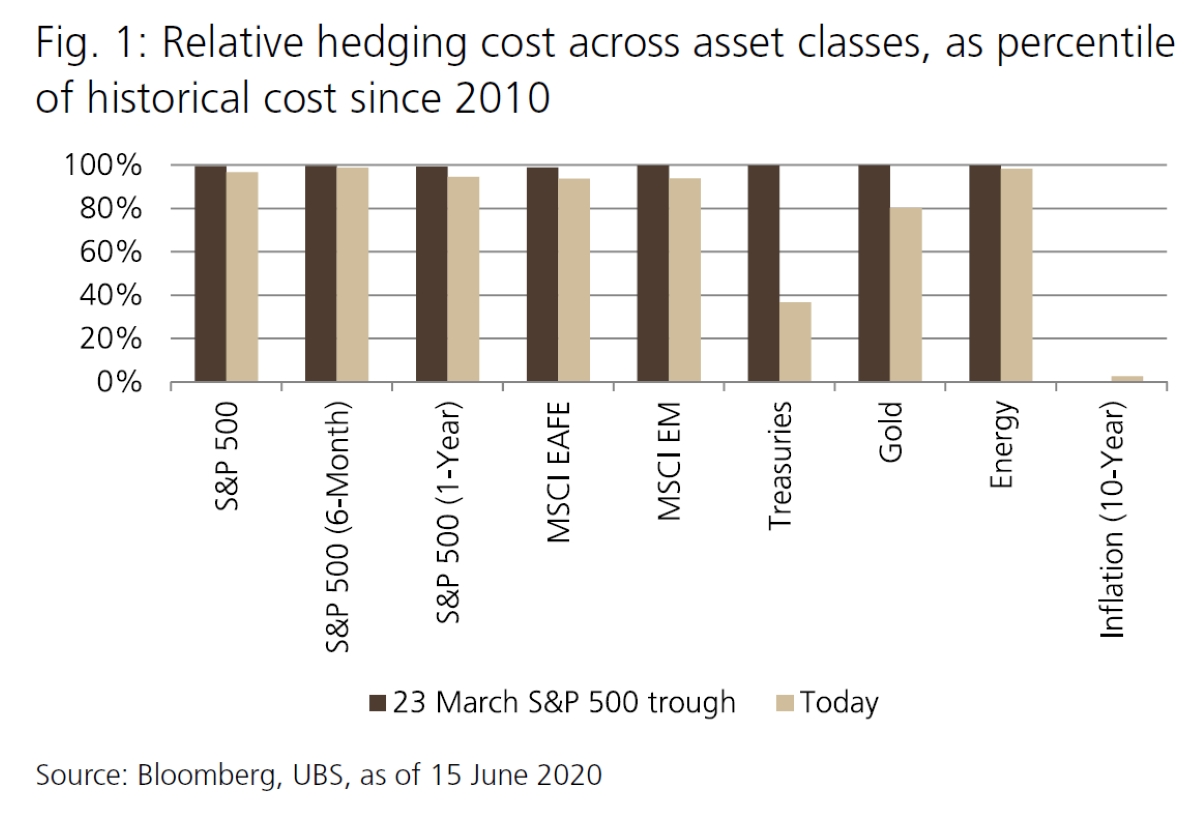

Finance
How To Short Cryptocurrency
Published: October 5, 2023
Learn how to short cryptocurrency and make profits in the finance industry. Discover effective strategies and techniques to minimize risks and maximize gains.
(Many of the links in this article redirect to a specific reviewed product. Your purchase of these products through affiliate links helps to generate commission for LiveWell, at no extra cost. Learn more)
Table of Contents
Introduction
Short selling in the world of finance is a strategy that allows traders to profit from a declining market by borrowing an asset and selling it at the current market price with the intention of buying it back at a lower price in the future. While short selling has been primarily associated with traditional stocks and commodities, it has also gained popularity in the world of cryptocurrency.
In this article, we will dive into the world of short selling cryptocurrency and provide a comprehensive guide on how to successfully short a cryptocurrency. Whether you are a seasoned trader looking to explore new avenues for profit or a beginner in the world of cryptocurrency, understanding how to short cryptocurrency can be a valuable tool in your financial arsenal.
However, it is important to note that short selling carries its own inherent risks and complexities. Therefore, proper knowledge and the right approach are crucial to navigate this strategy effectively.
In the following sections, we will explore the key aspects of short selling cryptocurrency, from understanding the concept to selecting a reliable exchange, setting up your short position, managing risks, and monitoring and closing your position.
So, let’s embark on this journey into the world of short selling cryptocurrency and discover how this strategy can be applied to maximize potential gains. By the end of this article, you will have a solid understanding of how to short cryptocurrency and the necessary tools and knowledge to implement this strategy successfully.
Understanding short selling in cryptocurrency
Short selling in the realm of cryptocurrency follows the same basic principle as traditional short selling. It involves borrowing a cryptocurrency asset, selling it at the current market price, and then buying it back at a lower price in the future to return to the lender. The difference in prices allows traders to profit from the price decline.
However, in the world of cryptocurrency, short selling is slightly different due to the decentralized nature of digital currencies and the availability of various trading platforms. Instead of borrowing the actual cryptocurrency, traders usually enter into derivative contracts, such as futures or options, to take a short position.
Short selling can be a powerful tool for traders to capitalize on market downturns or hedge their existing cryptocurrency positions. It allows for potential gains even in a declining market, adding flexibility and diversification to a trader’s portfolio.
When short selling cryptocurrency, it is important to have a thorough understanding of the underlying asset, including its market trends, volatility, and potential catalysts that could impact its price. Conducting in-depth research and analysis is key to identifying suitable cryptocurrencies for short selling.
Furthermore, it is vital to have a disciplined approach to risk management when short selling. Since losses in short selling can be unlimited if the price of the cryptocurrency rises significantly, implementing effective risk mitigation strategies, such as setting stop-loss orders and defining exit points, is crucial.
Moreover, short selling cryptocurrency requires a reliable and reputable cryptocurrency exchange that offers short selling services. It is important to choose an exchange with a robust security infrastructure to protect your funds and ensure the integrity of the trading platform.
Now that we have a basic understanding of short selling in cryptocurrency, let’s move on to the next section, where we will discuss the process of selecting the right cryptocurrency exchange for short selling.
Choosing the right cryptocurrency exchange
When it comes to short selling cryptocurrency, choosing the right exchange is paramount. Not all exchanges support short selling, so it is important to find a reputable platform that offers this service. Here are some key factors to consider when selecting a cryptocurrency exchange for short selling:
- Reputation and Security: Look for exchanges with a solid reputation in the cryptocurrency community. Read reviews, check their security measures, and ensure that the exchange has never been hacked or compromised. Security should be a top priority when choosing an exchange.
- Liquidity: A highly liquid exchange ensures that you can easily enter and exit your short positions. Look for exchanges with high trading volumes and a large number of active users.
- Range of Cryptocurrencies: Consider the selection of cryptocurrencies available for short selling. It is beneficial to choose an exchange that offers a diverse range of cryptocurrencies so that you have more options to choose from.
- Trading Fees: Compare the trading fees across different exchanges. High fees can eat into your profits, so opt for an exchange with competitive fees that align with your trading strategy.
- User-Friendly Interface: A user-friendly interface is crucial, especially for beginners. Look for an exchange that offers a clean and intuitive interface with charting tools and technical indicators to help with analysis.
- Leverage and Margin Trading: Some exchanges offer leverage and margin trading options for short selling. This allows you to amplify your potential gains or losses. If you are interested in utilizing leverage, ensure that the exchange provides this feature.
- Regulatory Compliance: Cryptocurrency exchanges that operate under regulatory frameworks provide an added layer of protection for users. Check if the exchange complies with regulations in your jurisdiction.
Considering these factors will help you narrow down your options and choose the most suitable cryptocurrency exchange for short selling. It is advisable to do thorough research and read user reviews to gain insights into the experiences of other traders.
Now that you have selected the right cryptocurrency exchange, let’s move on to the next section, where we will discuss the process of setting up your short position.
Setting up your short position
Once you have selected a reputable cryptocurrency exchange that supports short selling, it’s time to set up your short position. Here is a step-by-step guide on how to do it:
- Create an account: Sign up for an account on the chosen cryptocurrency exchange. Provide the necessary personal information and complete any verification processes required by the exchange.
- Deposit funds: Deposit the desired amount of funds into your exchange account. Ensure that you have enough capital to cover potential losses and margin requirements, if applicable.
- Select a cryptocurrency: Choose the cryptocurrency you want to short sell from the available options on the exchange. Consider factors such as market trends, volatility, and your research on the asset.
- Choose the short selling method: Depending on the exchange, you may have options for short selling, such as futures contracts, options contracts, or margin trading. Select the method that aligns with your trading strategy and risk tolerance.
- Enter your short position: Determine the quantity or amount you want to short sell and enter the trade on the exchange’s trading platform. Specify the price at which you want to enter the trade or let the exchange execute the order at the prevailing market price.
- Set stop-loss orders and take-profit targets: To manage your risk, set stop-loss orders to automatically close your position if the price moves against you. Additionally, consider setting take-profit targets to secure profits if the price reaches a certain level.
- Monitor your position: Keep a close eye on the market and monitor the performance of your short position. Stay updated with news and developments that may impact the price of the cryptocurrency.
It is important to note that the process of setting up a short position may vary slightly depending on the exchange and the trading platform. Familiarize yourself with the specific features and functionalities of the exchange you are using to ensure a smooth and successful short selling experience.
Now that you have set up your short position, it’s crucial to understand the risks involved in short selling cryptocurrency. In the next section, we will discuss how to effectively manage these risks to protect your capital.
Managing risks in shorting cryptocurrency
Shorting cryptocurrency can be a profitable strategy, but it also comes with inherent risks. Here are some key risk management strategies to consider when engaging in short selling:
- Set stop-loss orders: Implementing stop-loss orders is essential to limit potential losses. A stop-loss order is an instruction to automatically close your position if the price of the cryptocurrency moves against your short position. By setting a stop-loss order, you can protect yourself from excessive losses.
- Define your exit strategy: Have a clear plan in place for when you will exit your short position. This includes setting a target price or specific criteria that will trigger your exit. Stick to your plan and avoid making impulsive decisions based on short-term price fluctuations.
- Monitor the market and news: Stay informed about market trends and developments that may impact the price of the cryptocurrency you are shorting. Keep an eye on news, regulatory announcements, and any factors that could influence market sentiment.
- Use proper position sizing: Avoid overexposure by carefully considering the size of your short position. Determine the appropriate allocation of capital based on your risk tolerance and the specific cryptocurrency you are shorting. Diversify your portfolio to minimize the impact of any single short position.
- Be aware of market volatility: Cryptocurrency markets can be highly volatile, with price fluctuations occurring rapidly. This volatility can work in your favor as a short seller, but it also increases the risk. Be prepared for sudden price movements and adjust your risk management strategies accordingly.
- Stay disciplined: Stick to your trading plan and avoid making emotional or impulsive decisions. Emotions can cloud judgment and lead to poor decision-making. Maintain discipline, adhere to your risk management strategies, and avoid deviating from your original plan.
It is crucial to remember that short selling cryptocurrency involves unlimited loss potential if the price of the cryptocurrency rises significantly. Thus, risk management should be a top priority to protect your capital and ensure long-term success.
Now that you understand how to manage risks when shorting cryptocurrency, let’s proceed to the next section where we will discuss how to monitor and close your short position effectively.
Monitoring and closing your short position
Once you have entered a short position on a cryptocurrency, it is crucial to actively monitor the market and manage your position until it is time to close it. Here are some key steps to effectively monitor and close your short position:
- Stay updated with market trends: Continuously monitor the price movement and market trends of the cryptocurrency you are shorting. Stay informed about any news or events that could affect the price. Use technical analysis tools and charts to identify potential entry and exit points.
- Pay attention to risk indicators: Keep an eye on risk indicators such as market sentiment, trading volume, and price volatility. These indicators can signal potential changes in the market and help you make informed decisions about when to close your short position.
- Adjust stop-loss orders: As the market moves, consider adjusting your stop-loss orders to lock in profits or protect against further losses. Reassess your risk appetite and determine if you need to tighten or widen the stop-loss levels based on the market conditions.
- Take profits strategically: If the price of the cryptocurrency reaches your predetermined profit target, consider closing a portion or all of your short position to lock in gains. It is important not to be too greedy and to capitalize on profits when the market conditions align with your trading strategy.
- Be patient and follow your plan: Stick to your trading plan and avoid making impulsive decisions based on short-term price movements. Keep your emotions in check and trust in your analysis and risk management strategies. Patience and discipline are key to successful short selling.
- Close your position: When you believe it is the right time to exit your short position, place an order to buy back the cryptocurrency at the current market price. This will effectively close your short position and realize your gains or losses.
It is important to note that timing the closing of your short position can be challenging. Market conditions can change rapidly, and it is crucial to exercise caution and make informed decisions based on reliable information and analysis.
By actively monitoring the market, adjusting risk indicators, and strategically taking profits, you can effectively manage your short position and exit at an opportune time. Successful monitoring and closing of your short position can lead to profitable gains and help protect your capital.
Next, we will conclude our guide on short selling cryptocurrency and summarize the key points discussed throughout the article.
Conclusion
Short selling cryptocurrency can be a valuable strategy for traders to profit from a declining market or hedge their existing positions. Understanding the intricacies of short selling and implementing effective risk management strategies are crucial for success in this venture.
In this article, we explored the concept of short selling in cryptocurrency, highlighting its similarities and differences from traditional short selling. We discussed the importance of choosing the right cryptocurrency exchange, considering factors such as reputation, liquidity, fees, and user-friendliness.
Setting up a short position involves creating an account, depositing funds, selecting the desired cryptocurrency, choosing the short selling method, and entering the trade. Managing the risks associated with short selling is vital to protect capital, which includes setting stop-loss orders, defining exit strategies, and staying disciplined.
Monitoring and closing your short position requires staying updated with market trends, adjusting risk indicators, and strategically taking profits. It is essential to be patient, follow your trading plan, and make informed decisions to maximize gains and minimize losses.
By following these guidelines, you can navigate the world of short selling cryptocurrency with confidence. It is important to continually educate yourself, stay updated with market news and developments, and adapt your strategies as necessary to stay ahead in this dynamic landscape.
Remember that short selling carries risks, and it is always recommended to seek professional advice and conduct thorough research before engaging in any trading activity. With the right knowledge, strategy, and risk management, short selling cryptocurrency can be a valuable tool in your financial arsenal.
Now that you have a solid understanding of how to short cryptocurrency, take your time to practice and refine your skills. As with any investment strategy, experience and continuous learning will be key to achieving success in the dynamic and ever-evolving world of cryptocurrency trading.














